Transforming your living space into a lush oasis is totally doable, even if you fall into the horticulturally hopeless category. Yes, in an ideal world, we’d all be those magical folks with the green thumbs who only have to look at a plant for it to grow and bloom right before our eyes. But if you’re one of those regular folks, whose plant parenting skills might be, well, less than stellar, that shouldn’t stop you from having a beautiful, plant-filled living space.
You just need to choose the right plants to get you started. Thriving houseplants are good for the soul, but they also act as air purifiers. The studies around the benefits of houseplants are fascinating. Did you know that houseplants can help you recover from illness faster and improve your productivity? Well, they can according to science, so get growing!
1. Aloe Vera
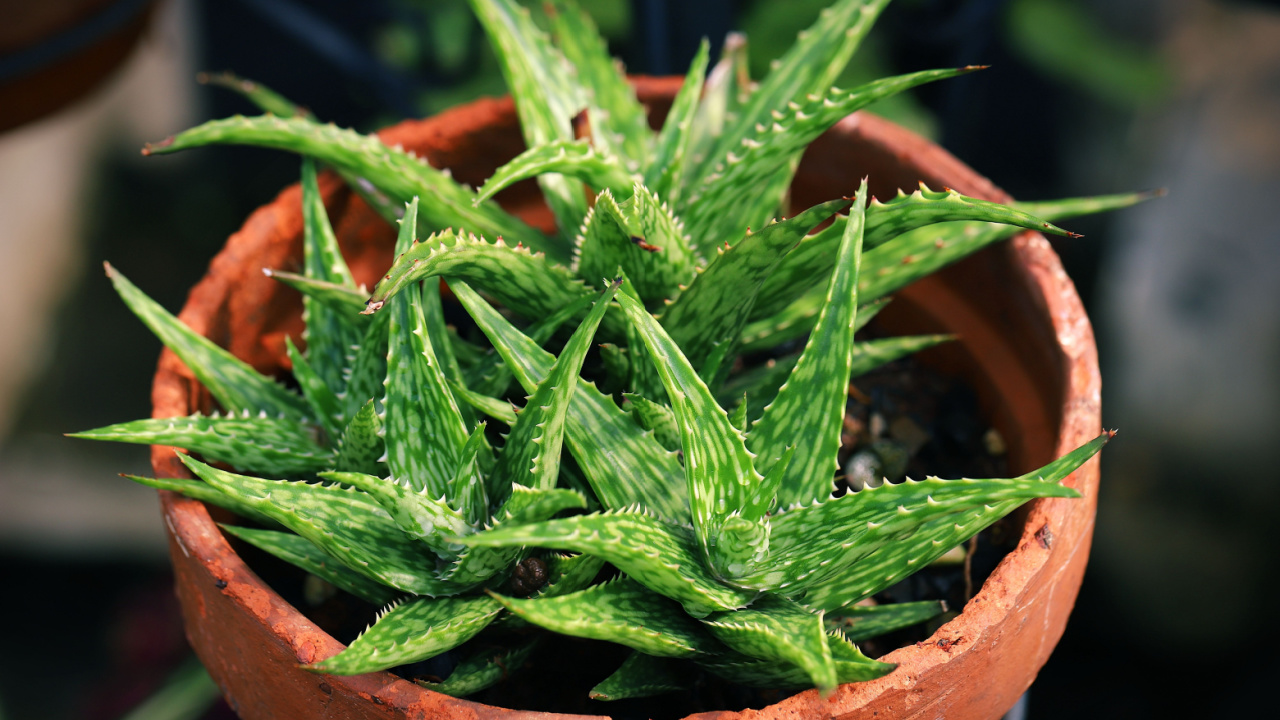
Botanical Name: Aloe barbadensis miller Sun Exposure: Full Soil Type: Well-drained Soil pH: Slightly Acidic (6.0) Aloe vera is super-easy to care for, and it’s a medicinal powerhouse. It’s probably my favorite houseplant because it’s so beginner-friendly and it provides me with lots of aloe gel that I turn into a variety of natural healing preparations.
Thriving in sunny spots and needing water every few weeks, it’s the perfect blend of beauty and functionality. Its soothing gel is a household remedy for sunburns and more, making it a must-have in your indoor plant collection.
2. Bird of Paradise

Botanical Name: Strelitzia reginae Sun Exposure: Full Soil Type: Well-drained, Moist, Loamy, Chalky Soil pH: Slightly Acidic to Neutral (6.0-7.5) The bird of paradise, with its spectacular flowers and large, silvery-green foliage, brings a slice of the tropics into your home.
Thriving in full sun, this plant can tolerate partial shade in very sunny regions, making it versatile for different light conditions. Its relative drought tolerance and dramatic appearance make it a stunning choice for indoor gardeners that need something fairly forgiving and easy to care for. I adore the bird of paradise. It’s one of the most stunning houseplants I’ve ever seen when it’s blooming. Just be aware that these plants get BIG.
3. Basil

Botanical Name: Ocimum basilicum Sun Exposure: Partial Soil Type: Well-draining, Rich, Moist Soil pH: Slightly Acidic to Neutral (6.0-7.0) Growing basil indoors combines the joy of gardening with the practicality of growing your own herbs.
It requires a bit of care to avoid soggy soil but rewards you with fresh, aromatic leaves for your culinary creations. A sunny windowsill and occasional watering are all you need to keep this herb thriving.
4. Jade Plant

Botanical Name: Crassula ovata Sun Exposure: Full to Partial Soil Type: Well-drained, Sandy Soil pH: Neutral to Slightly Alkaline (6.0-7.5) A symbol of prosperity, the jade plant is a glorious succulent with glossy, green leaves. It’s exceptionally low-maintenance, requiring well-drained soil and sparse watering, making it ideal for forgetful or busy plant owners.
Thriving in both full and partial sunlight, this plant is adaptable to various indoor environments. I adore my jade plants. I found them abandoned in an old garage at my new house. It had been empty for over a year, and there were these two wizened little jade plants in tiny pots with no water and barely any light, just desperately clinging to life in spite of their awful circumstances.
So, naturally, I rescued them and now, some four years later, they are huge and thriving in my kitchen. They’ve also produced loads of pups so I now have a small army of jades and I’ve gifted many, too.
5. Hen-and-Chicks Succulents
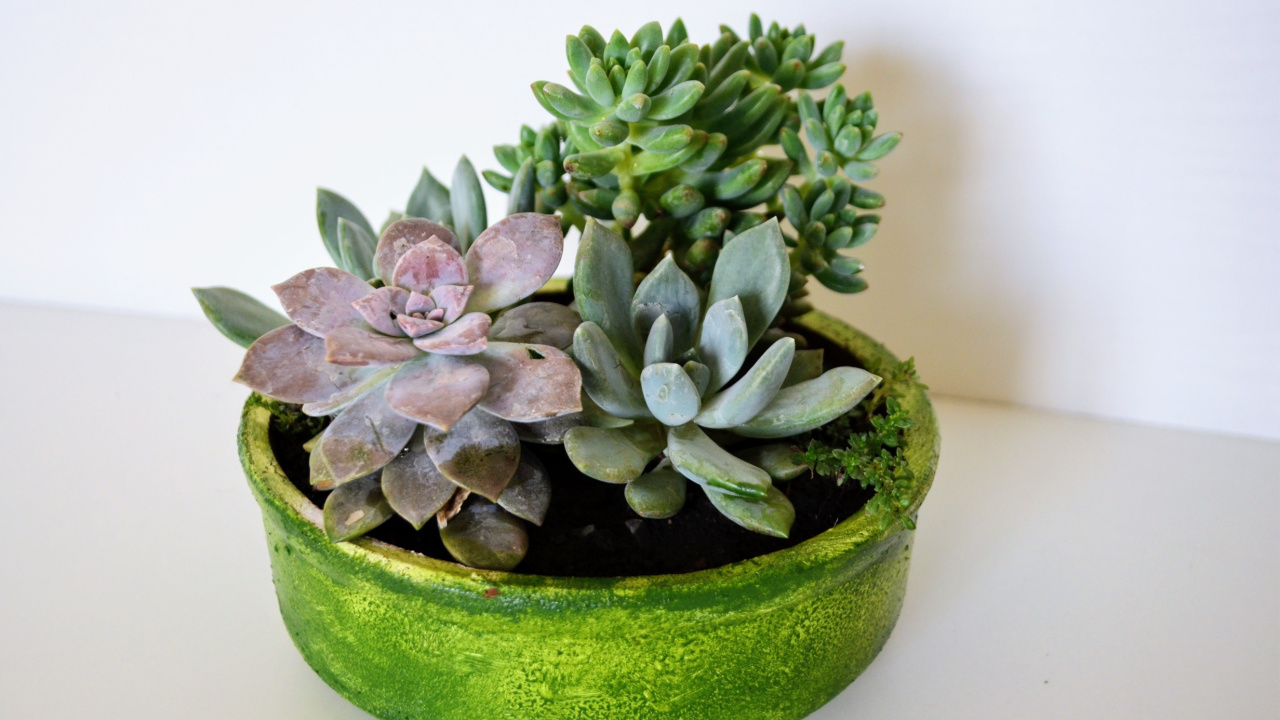
Botanical Name: Echeveria Sun Exposure: Full Soil Type: Well-drained, Sandy Soil pH: Slightly Acidic (6.0) Echeveria, or Hen-and-Chicks, are compact succulents that thrive on neglect. Perfect for a sunny windowsill, these plants require minimal watering and can add a pop of color and life to small spaces. Their diverse colors and easy care make them an excellent choice for beginners.
6. ZZ Plant
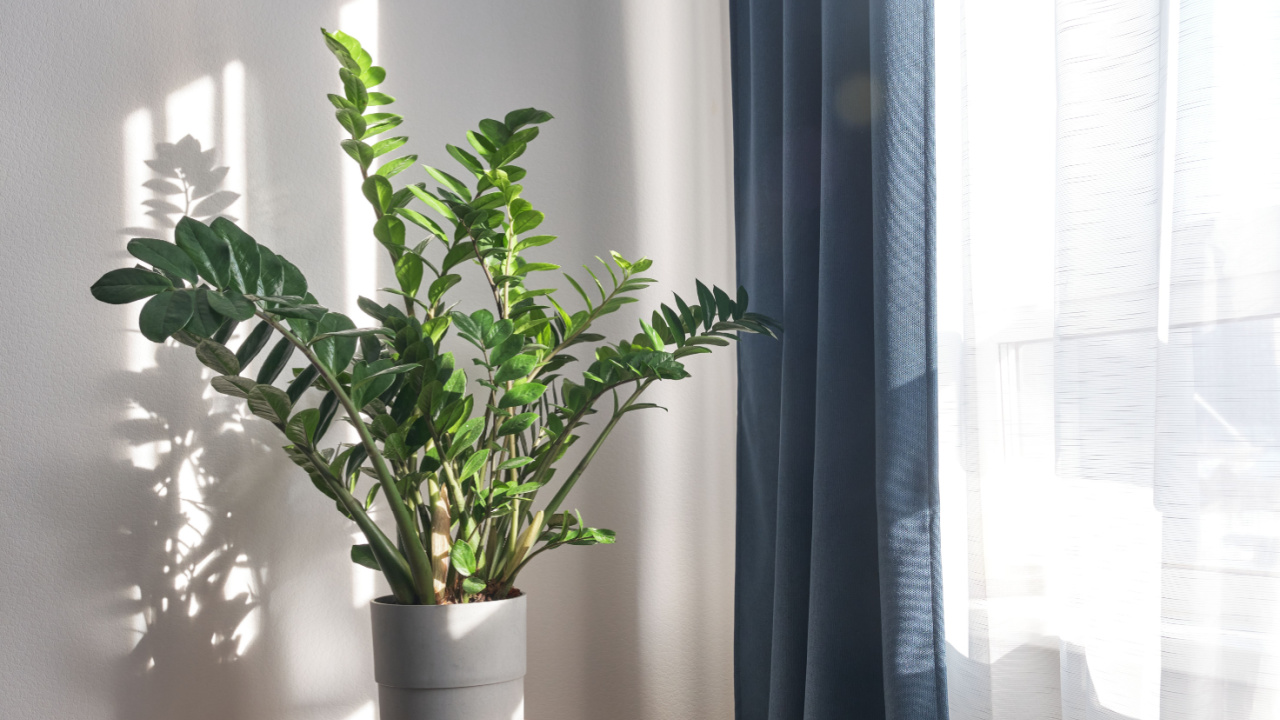 Botanical Name: Zamioculcas zamiifolia Sun Exposure: Partial to Shade Soil Type: Well-drained, Organic Soil pH: Acidic to Neutral (6.0-7.0) The ZZ Plant is a marvel of resilience, capable of surviving with minimal light and water. Its waxy, verdant leaves bring elegance to any corner, making it an ideal choice for those prone to neglecting their plants.
Botanical Name: Zamioculcas zamiifolia Sun Exposure: Partial to Shade Soil Type: Well-drained, Organic Soil pH: Acidic to Neutral (6.0-7.0) The ZZ Plant is a marvel of resilience, capable of surviving with minimal light and water. Its waxy, verdant leaves bring elegance to any corner, making it an ideal choice for those prone to neglecting their plants.
Despite its toughness, remember it’s toxic to pets and humans if ingested. For this reason, I don’t grow the ZZ plant, because my cats are houseplant fiends and love to chew leaves.
7. Christmas Cactus

Botanical Name: Schlumbergera Sun Exposure: Shade Soil Type: Well-drained, Sandy Soil pH: Acidic (5.5-6.2) The Christmas cactus thrives in well-draining soil, blooming spectacularly for weeks with proper care. Originating from Brazil’s coastal mountains, it’s an epiphyte that enjoys the kind of mixed soil found in its natural habitat.
This plant is celebrated for its festive blooms, brightening the holiday season with vibrant flowers. It doesn’t require much care but enjoys plenty of indirect sunlight.
8. Rubber Plant
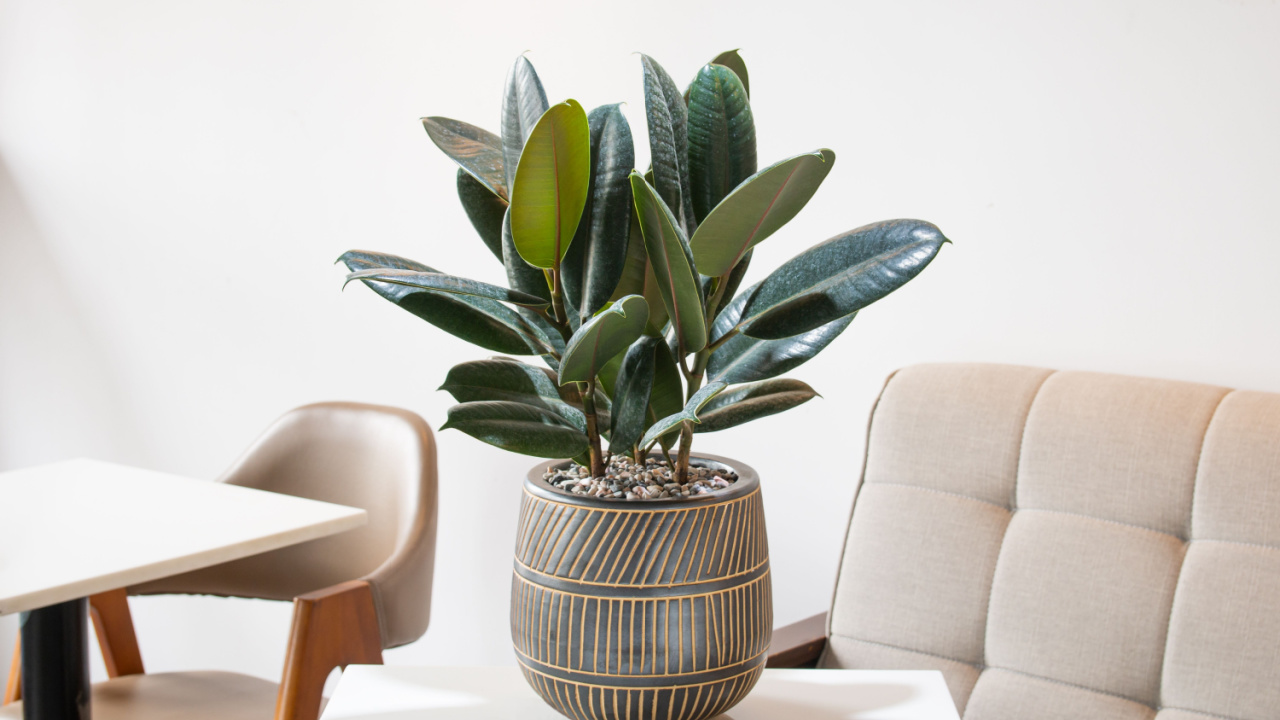
Botanical Name: Ficus elastica Sun Exposure: Partial Shade Soil Type: Moist but Well-drained Soil pH: Acidic (5.5-7.5) Embrace the darker, more dramatic side of indoor greenery with the Rubber Plant. Its deep green leaves offer a touch of sophistication. You’ll find the rubber plant thriving in medium light and needing just a weekly sprinkle of water.
Originating from Asia, the rubber plant decorates beautifully and purifies your home, making it a doubly beneficial companion.
9. Yucca Cane

Botanical Name: Yucca gigantea Sun Exposure: Full to Partial Soil Type: Well-drained, Dry, Sandy Soil pH: Slightly Alkaline (6.0) Yucca cane stands out with its bold and striking appearance, thriving in light shade and asking for little more than dry, well-drained soil. This robust plant, hailing from Guatemala and southeast Mexico, adapts well to indoor environments, adding a touch of the desert to your home with minimal effort.
10. Calathea Rattlesnake

Botanical Name: Goeppertia insignis Sun Exposure: Partial Soil Type: Moist but Well-drained Soil pH: Acidic to Neutral (6.5) The calathea rattlesnake, with its unique, wavy leaves that gather at night like hands in prayer, is a living piece of art. This South American native dazzles with its leaf patterns and blooms with small yellow flowers come spring, offering a dynamic blend of beauty and intrigue.
11. Anthurium
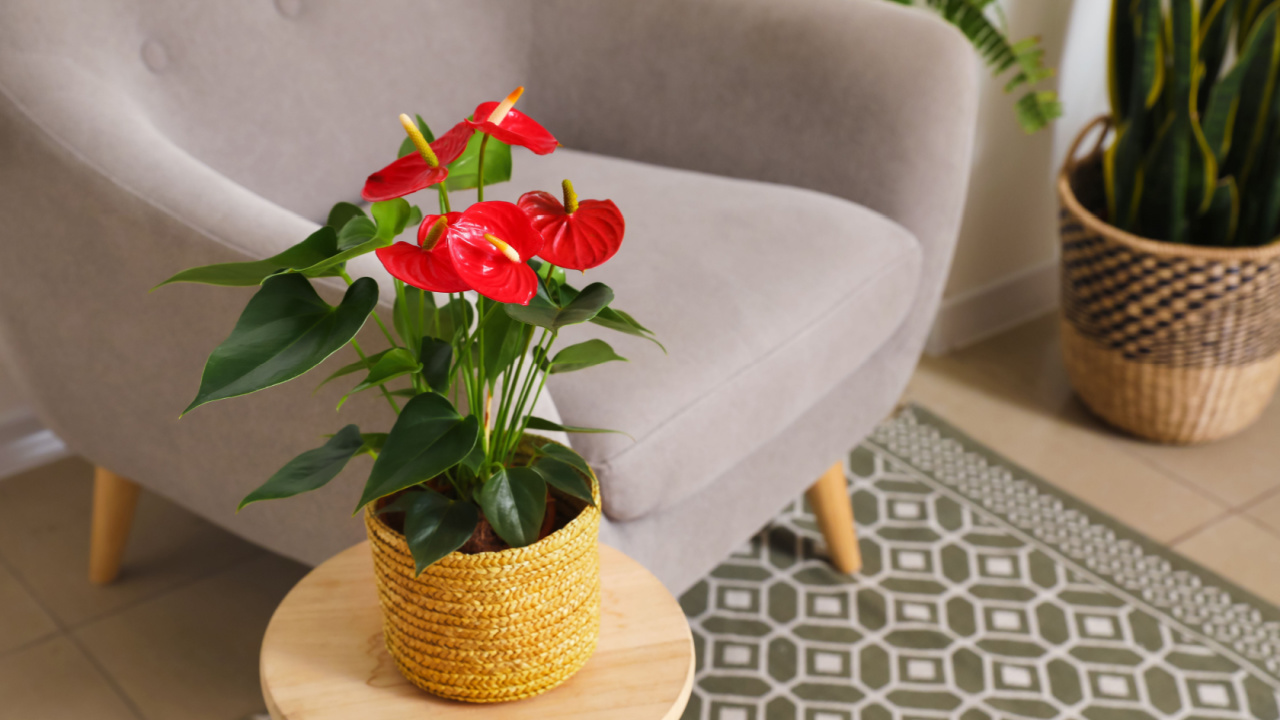
Botanical Name: Anthurium spp Sun Exposure: Partial Soil Type: Well-drained, Sandy, Rich Soil pH: Acidic (5.5-6.5) Brighten up your workspace with the vivid anthurium. Its heart-shaped flowers and glossy leaves make it a truly stunning plant that flourishes in bright, indirect light.
Originating from the warmer climes of South America and the Caribbean, it brings a splash of tropical color to your indoor garden.
12. Snake Plant

Botanical Name: Dracaena trifasciata Sun Exposure: Full to Partial Soil Type: Well-drained, Light, Loamy Soil pH: Neutral to Slightly Acidic (5.5-7.0) The snake plant is an ideal choice for those new to indoor gardening. With its striking, upright leaves, it purifies the air while asking for very little in return—just water it every couple of weeks.
This resilient succulent, native to southern Africa, is easy to propagate, too, so you can grow baby snake plants and spread them through your home or gift them to friends and family.
13. Tufted Airplant
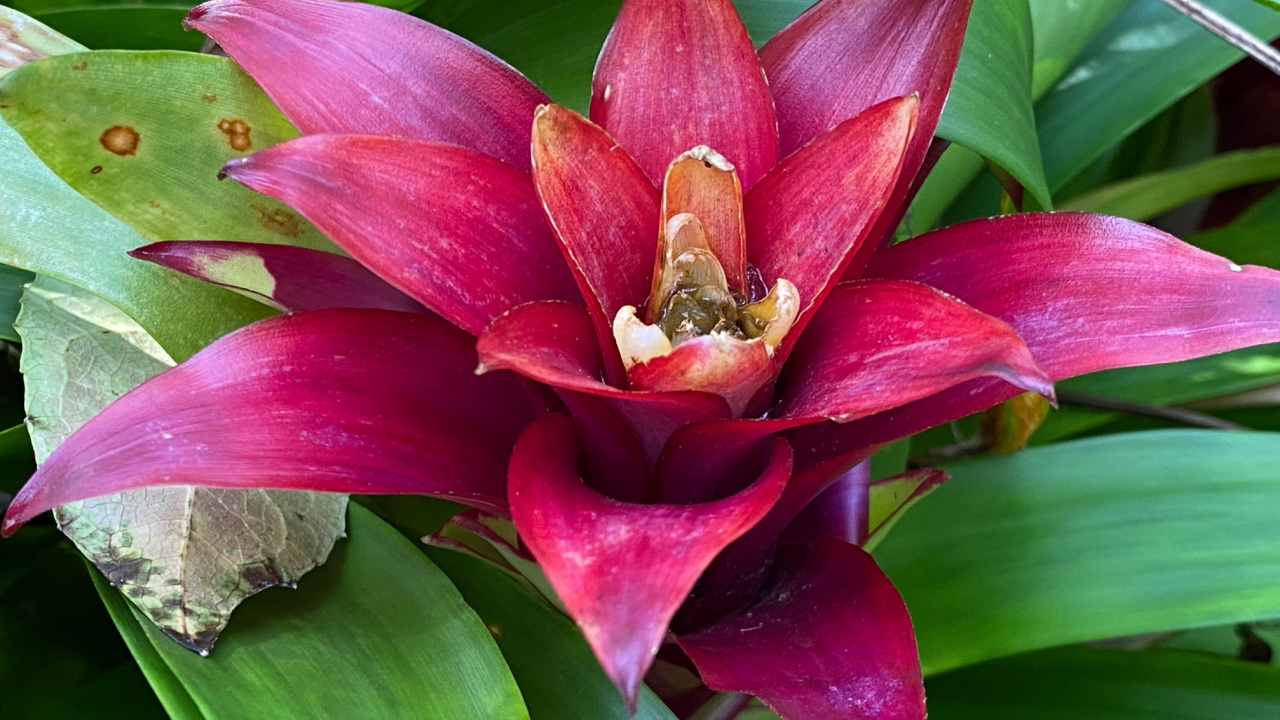
Botanical Name: Guzmania lingulata Sun Exposure: Partial Soil Type: Well-drained, Rich Soil pH: Slightly Acidic (6.0-6.5) The tufted airplant is a low-maintenance wonder, captivating with its bold blooms and long-lasting color. Thriving in the humid, shaded conditions of its native rainforests in Central and South America, it’s a fuss-free addition that brings a burst of vibrancy to your living space.
14. Silver Philodendron

Botanical Name: Scindapsus pictus Sun Exposure: Partial Soil Type: Well-drained, Loose Soil pH: Slightly Acidic to Neutral (6.0-7.5) This charming plant, with its heart-shaped, velvety leaves, is perfect for adding a touch of greenery to every corner of your home. Requiring just weekly watering and some indirect sunlight, the silver philodendron is an excellent choice for those looking to start their indoor plant collection.
15. Ficus Bonsai

Botanical Name: Ficus retusa Sun Exposure: Full to Partial Soil Type: Well-drained, Loose Soil pH: Slightly Acidic to Neutral (6.0-6.5) The ficus bonsai brings a sense of balance and tranquility to any space. This miniature tree, with its artful shape and lush foliage, does require mindful pruning and careful watering to thrive, but it’s among the easiest of the bonsais if you’re interested in taking up that particular hobby.
16. Chinese Money Plant

Botanical Name: Pilea peperomioides Sun Exposure: Full to Partial Soil Type: Well-drained, Rich, Loamy Soil pH: Neutral (6.0-7.0) Distinctive for its round, coin-like leaves, the Chinese money plant is a refreshing departure from the usual indoor greenery. Known for its simplicity in terms of care requirements, this plant brings a unique aesthetic.
Its leaves drooping is a signal for more water, but generally, it prefers the soil to be somewhat dry, especially in well-lit areas.
17. Spider Plant
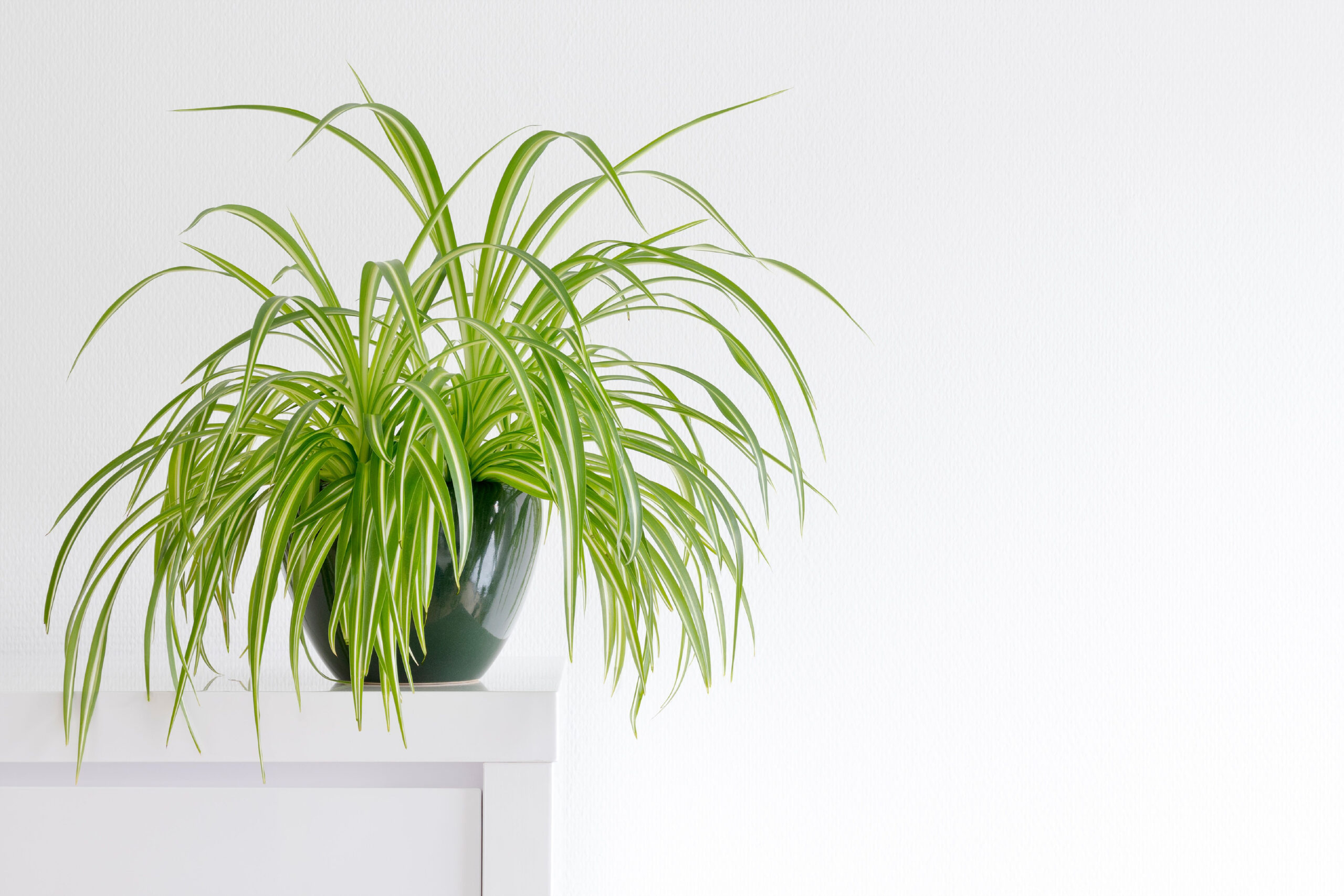
Botanical Name: Chlorophytum comosum Sun Exposure: Full to Partial Soil Type: Well-drained, Moist, Loamy Soil pH: Slightly Acidic (6.0-6.5) The spider plant, with its lively, arching foliage, is a delight to grow. It’s incredibly forgiving and propagates easily, making it a favorite among those new to indoor gardening. This plant is known for its quick growth and the charming, tiny white flowers it produces in summer.
Available in both solid green and variegated forms, the spider plant is a simple but lovey plant and you can easily nurture the pups it produces to grow a whole battalion of spider plants. As an aside, the pups these plants produce are totally adorable.
18. Asparagus Fern

Botanical Name: Asparagus setaceus Sun Exposure: Full to Partial Soil Type: Well-drained, Moist, Rich Soil pH: Slightly Acidic (6.5-6.8) Ideal for an indoor hanging basket, the asparagus fern, when it’s thriving, is an interesting burst of feathery, green texture that looks very much like asparagus stalks when they’re left to grow and complete their lifecycle. This plant prefers to stay moist and will let you know it’s too dry by shedding its needles.
Fast-growing and easy to prune, you can also propagate this plant from seeds found in its red berries. The asparagus fern is a lively addition to your home.
19. Chinese Evergreen
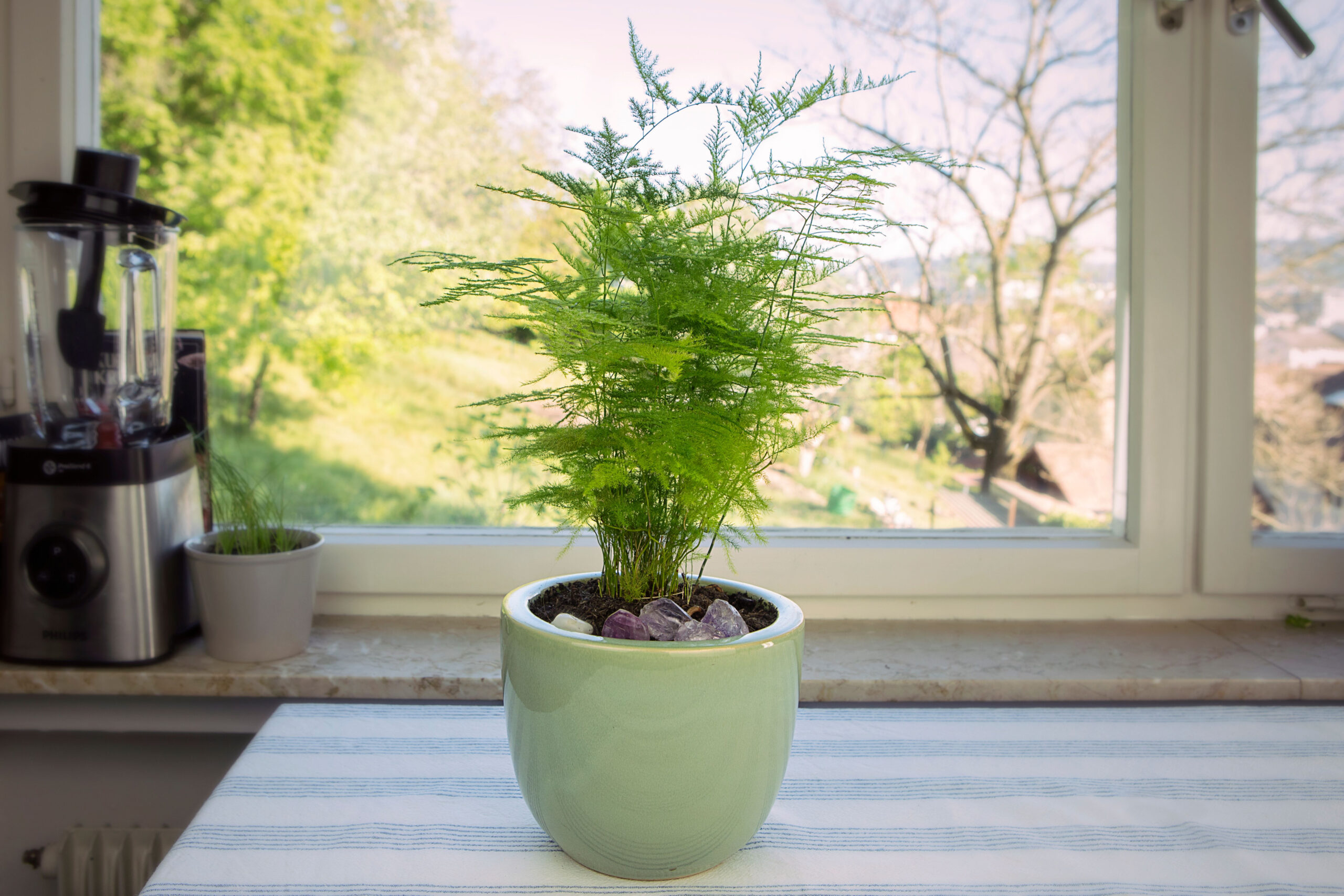
Botanical Name: Aglaonema commutatum Sun Exposure: Partial Soil Type: Well-drained, Sandy Soil pH: Slightly Acidic (5.5-6.5) The Chinese evergreen is a lush, bushy plant that thrives with minimal fuss. It’s perfect for adding a dense, green look to any corner, especially near an east-facing window where it can enjoy indirect light. It’s slow-growing but easy to care for. It’s worth noting that this plant is particularly toxic to pets, so placement is key.
20. Fittonia White
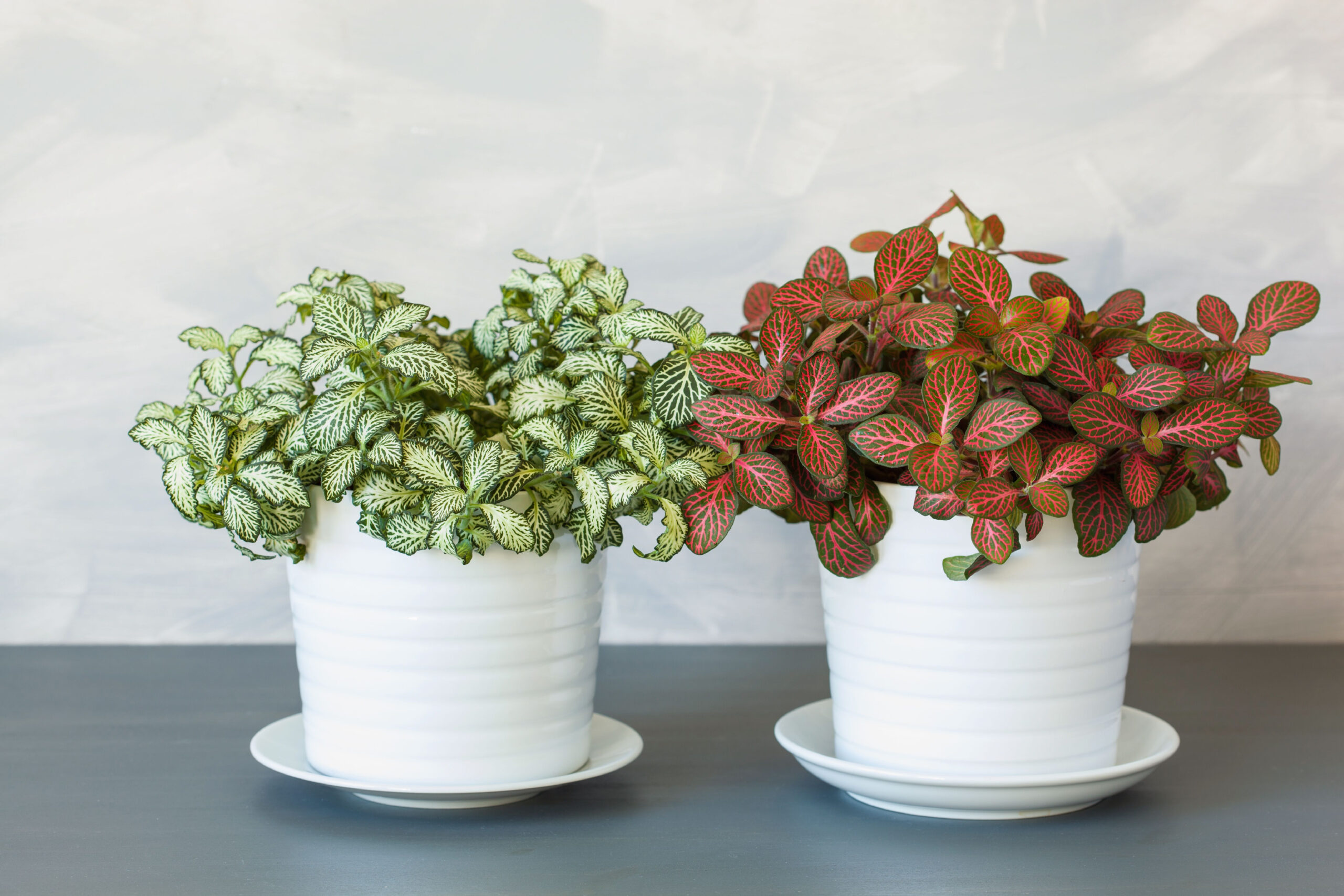
Botanical Name: Fittonia albivenis Sun Exposure: Partial Soil Type: Moist but Well-drained Soil pH: Slightly Acidic (6.5) The striking vein patterns of the fittonia white are reminiscent of a fine art painting, and, thanks to the interesting pattern, it’s commonly known as the nerve plant. This South American native prefers to dry out slightly between waterings and is known for its creeping growth, making it a visually stunning, low-maintenance option.
21. Pothos Neon
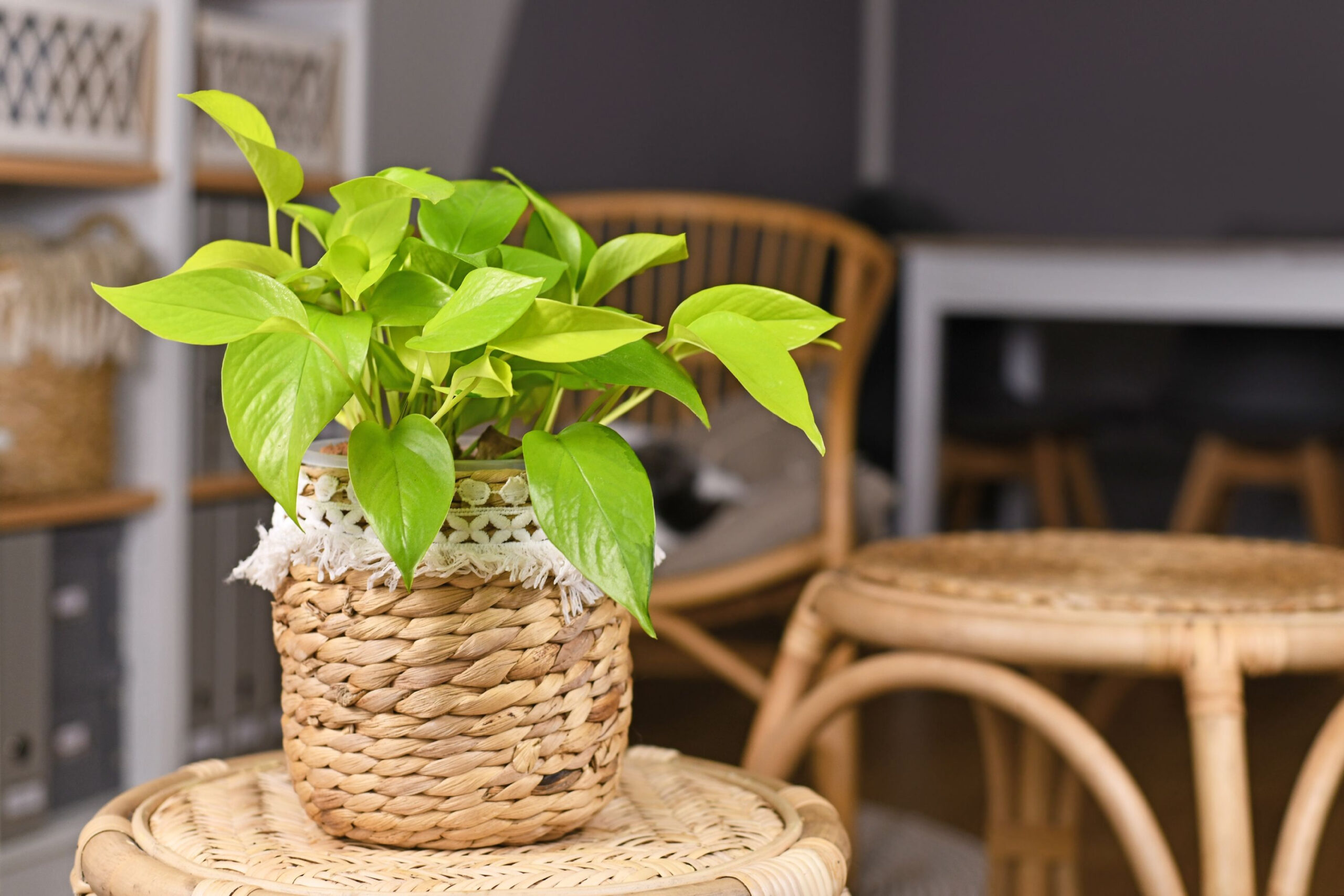
Botanical Name: Epipremnum aureum ‘Neon’ Sun Exposure: Partial Soil Type: Moist but Well-drained, Loamy Soil pH: Acidic (6.1-6.8) Brighten up your home with the vibrant, neon green leaves of the pothos neon. This easy-to-care-for plant is perfect for adding a splash of color and life to your living space. Its trailing vines are ideal for hanging baskets or as a lively accent on shelves.
22. English Ivy
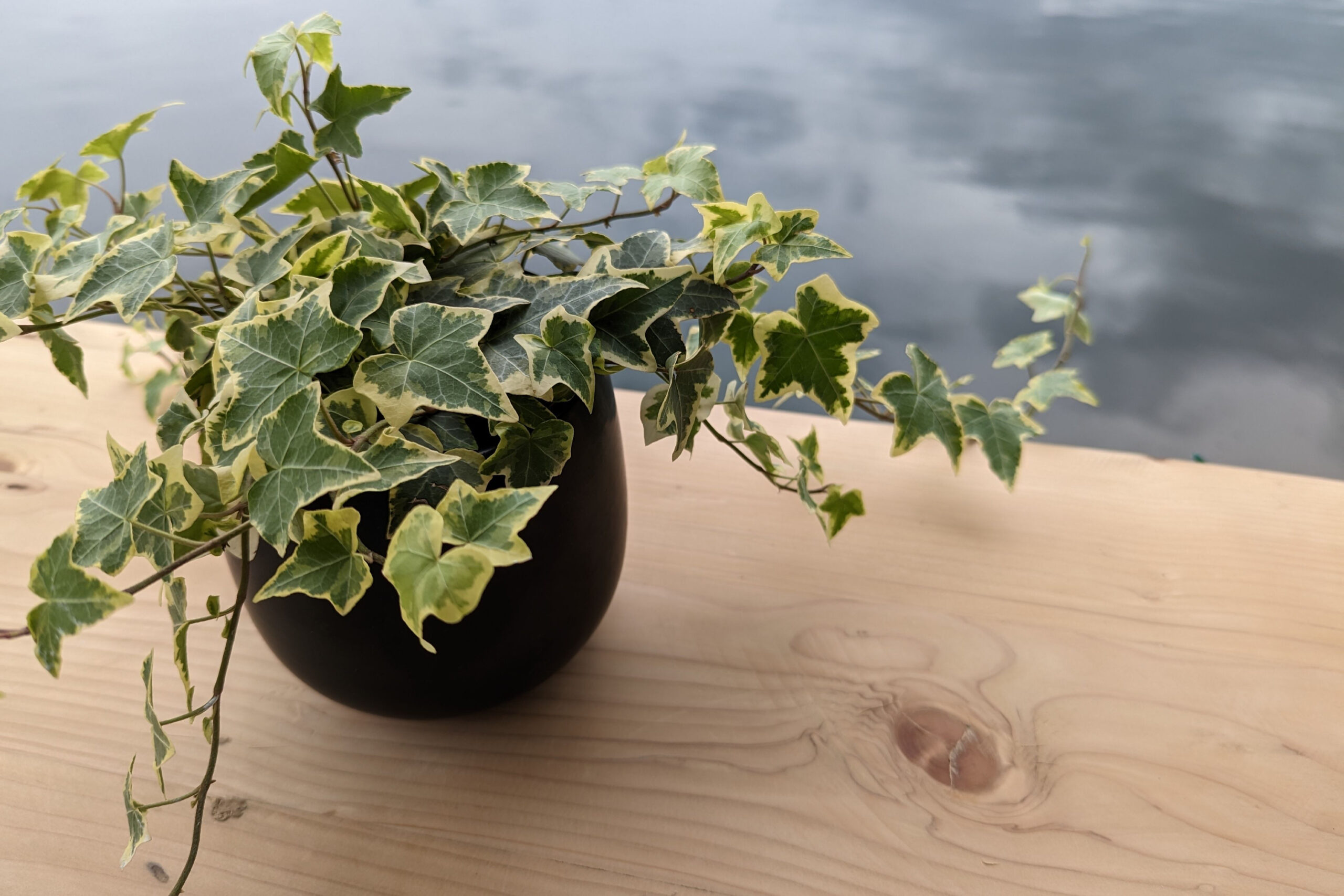
Botanical Name: Hedera helix Sun Exposure: Shade Soil Type: Well-drained, Loamy Soil pH: Neutral to Slightly Alkaline (6.0-7.5) English ivy is a classic, fast-growing vine that adds elegance and greenery to any space. Ideal for hanging baskets due to its trailing growth, it requires regular pruning to maintain shape and prevent it from becoming invasive.
Its adaptability to various environments makes it a popular choice for both indoor and outdoor settings. However, I wouldn’t recommend planting this outside, as it’ll quickly take over and is a nightmare to get rid of.
23. Split-Leaf Philodendron

Botanical Name: Monstera deliciosa Sun Exposure: Full to Partial Soil Type: Well-drained, Organic, Rich Soil pH: Slightly Acidic (6.0-6.5) This plant, often a staple in Southern decor, brings a tropical vibe into your home with its glossy, expansive leaves. Native to Central America’s rainforests, it adds a dramatic touch to any interior with minimal care, thriving in various lighting conditions and requiring only occasional watering.
24. Mini Monstera

Botanical Name: Rhaphidophora tetrasperma Sun Exposure: Partial Soil Type: Well-drained, Rich Soil pH: Slightly Acidic (5.5-7.0) Though not a true monstera, the mini monstera is perfect for those looking to bring the tropical vibe indoors without the space requirements of its larger cousin. It thrives in conditions that mimic its tropical origins, preferring indirect light and moderate watering, making it a forgiving choice for indoor environments.
25. Silver Pothos
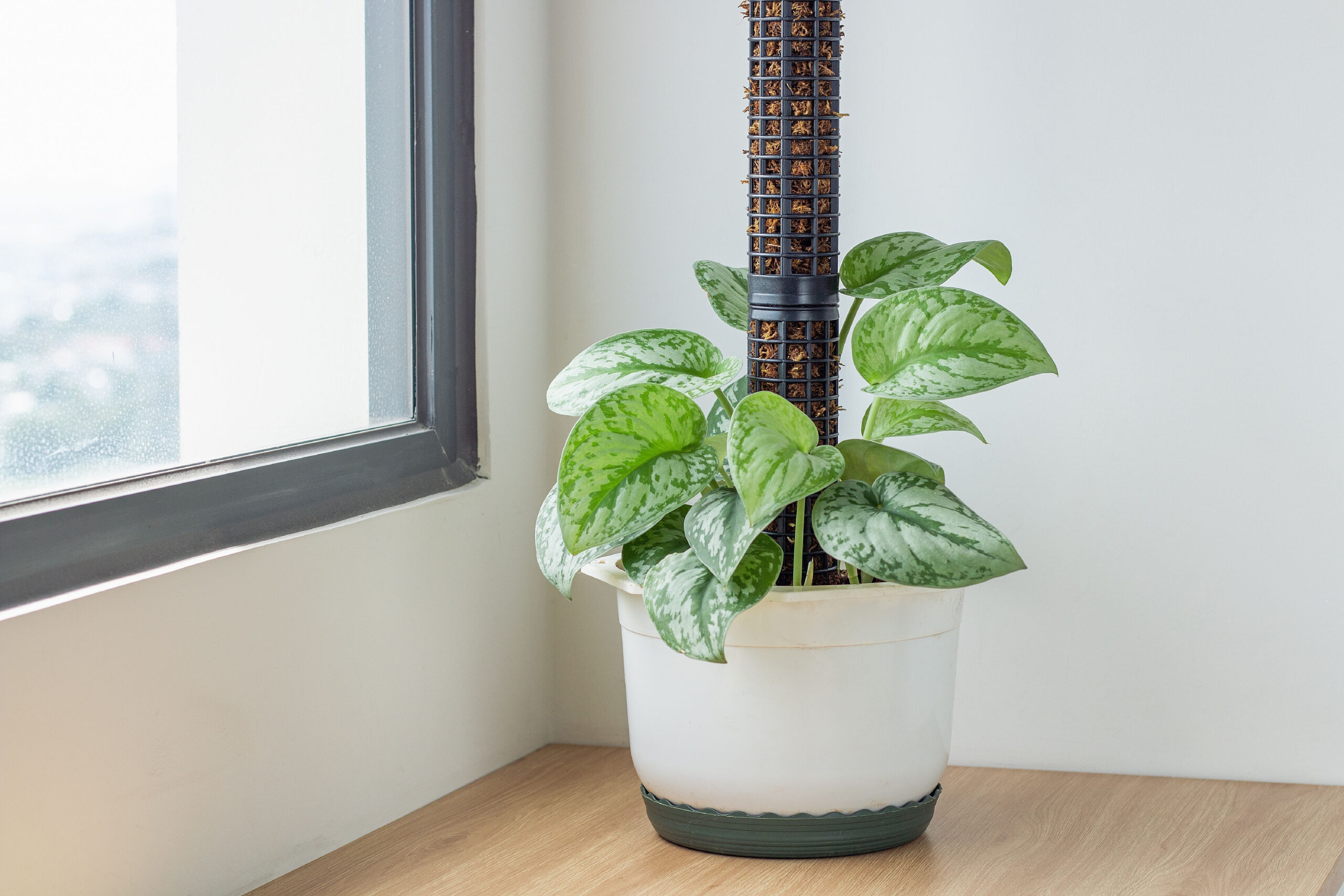
Botanical Name: Scindapsus pictus Sun Exposure: Partial Soil Type: Well-drained Soil pH: Slightly Acidic (6.1-6.5) The silver pothos is celebrated for its low maintenance and stunning, heart-shaped, silvery leaves. It’s particularly resilient, thriving in well-draining soil and requiring only moderate light. Ideal for hanging baskets, its trailing vines will add a touch of elegance to any space.
26. Cast Iron Plant
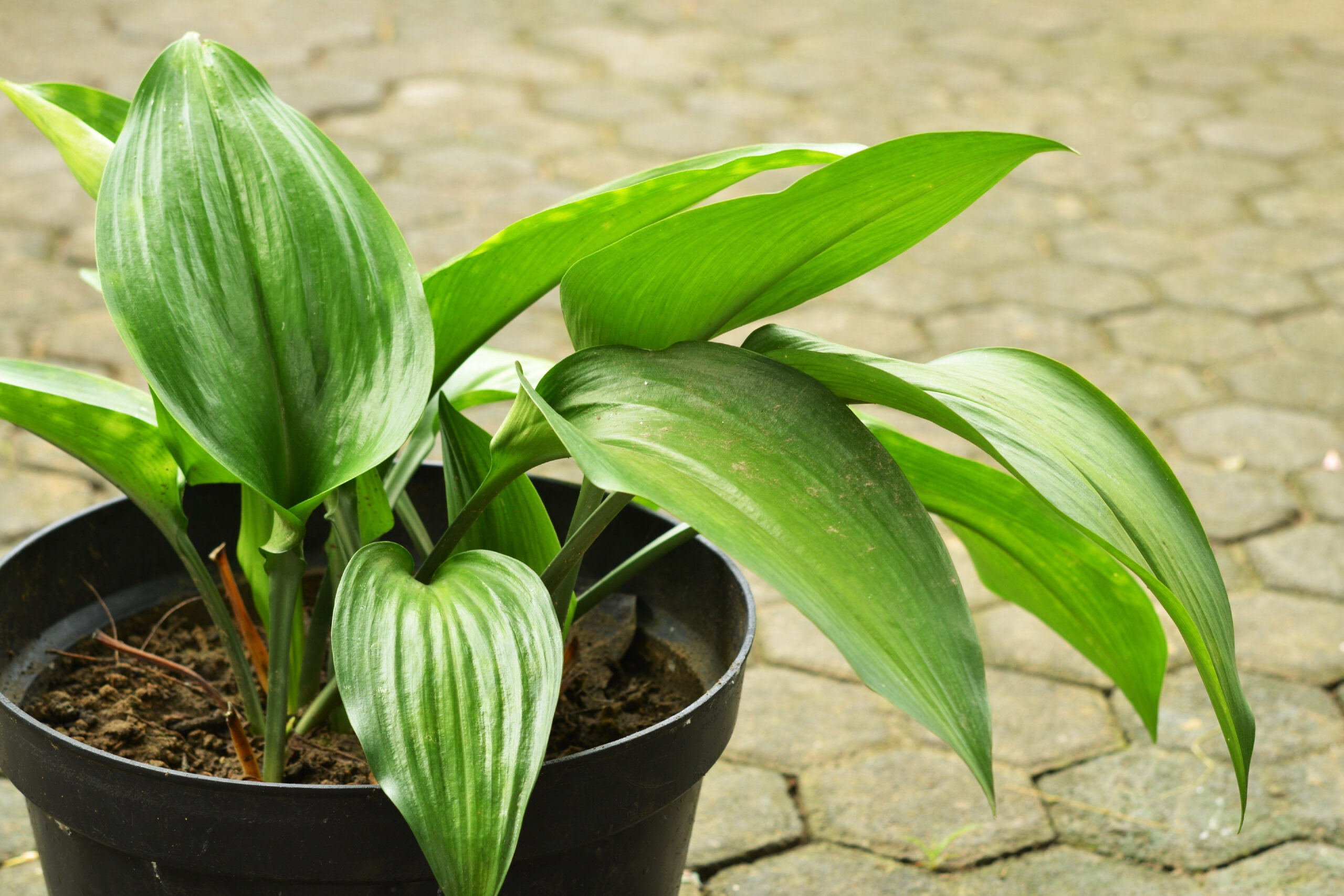
Botanical Name: Aspidistra elatior Sun Exposure: Partial, Shade Soil Type: Well-drained, Rich, Sandy, Loamy, Clay Soil pH: Slightly Acidic to Neutral (5.5-6.5) True to its name, the cast iron plant is tough and resilient, capable of thriving in less than ideal conditions. It’s perfect for those who might not have a perfect track record with plants, requiring only occasional watering once established. With its ability to grow in a variety of soil types and light conditions, it’s a versatile addition to any room.
27. Ponytail Palm

Botanical Name: Beaucarnea recurvata Sun Exposure: Full Soil Type: Well-draining, Sandy Soil pH: Neutral (6.5-7.5) Despite its name, the ponytail palm is not a true palm but a succulent, making it an excellent plant for those seeking drought-tolerant options. It enjoys bright light and can go extended periods without water, making it ideal for sunny spots and busy owners.
28. Emerald Ripple Peperomia

Botanical Name: Peperomia caperata Sun Exposure: Partial Soil Type: Well-draining, Rich Soil pH: Slightly Acidic (6.0-6.6) The emerald ripple peperomia, with its textured, heart-shaped leaves, is a compact plant that adds a pop of green to small spaces. It thrives in indirect light and requires watering only when the soil dries out, so it’s a solid, low-fuss choice for beginners.
29. Fiddle Leaf Fig
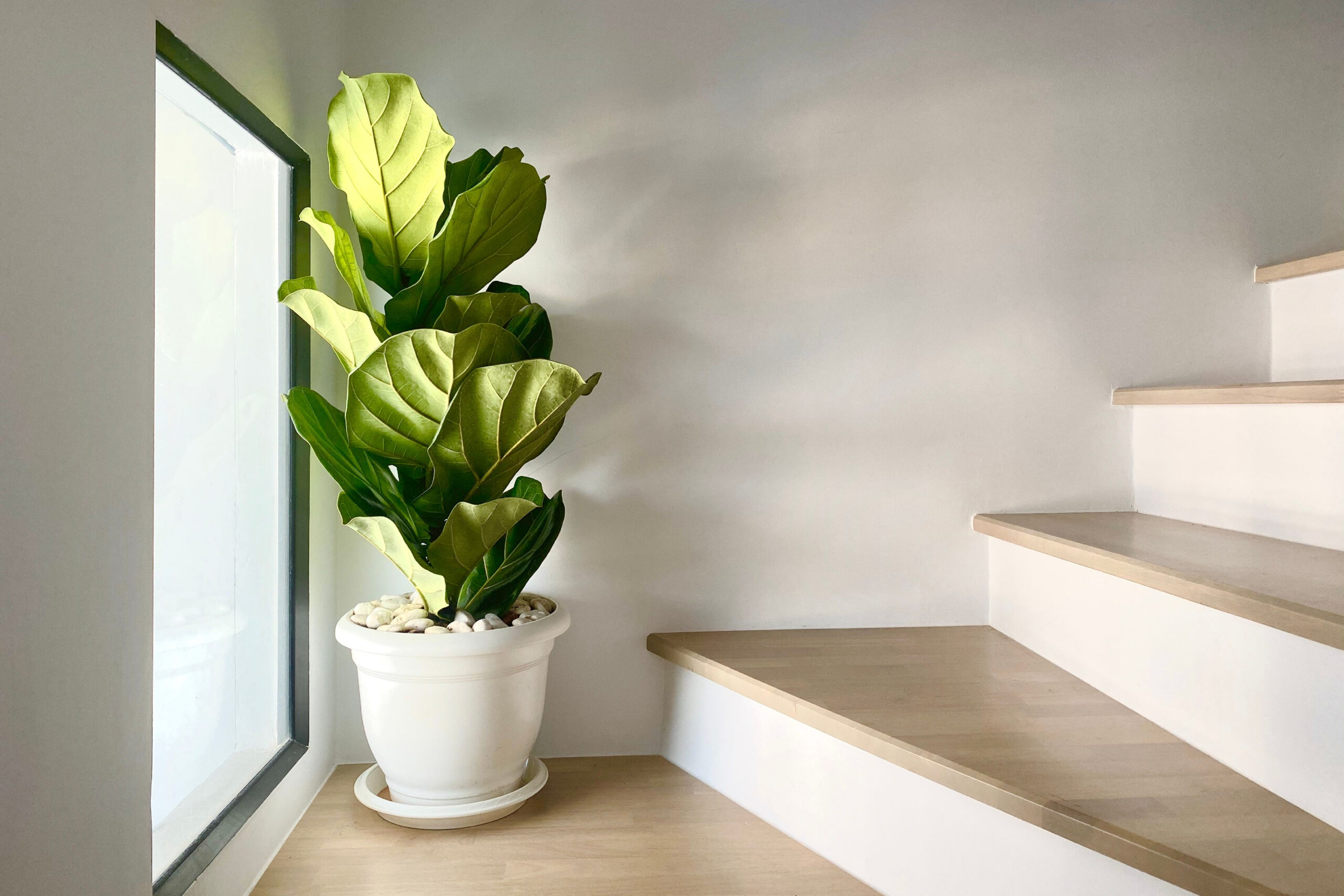
Botanical Name: Ficus lyrata Sun Exposure: Full Soil Type: Well-drained Soil pH: Acidic to Neutral (5.5-7.0) The fiddle leaf fig, with its stunning, large leaves, acts as a statement piece in any room. This plant belongs to the Ficus family but stands out due to its lower maintenance needs. Requiring watering roughly once a week, it can effortlessly enhance your space’s aesthetics while purifying the air.
30. Peace Lily
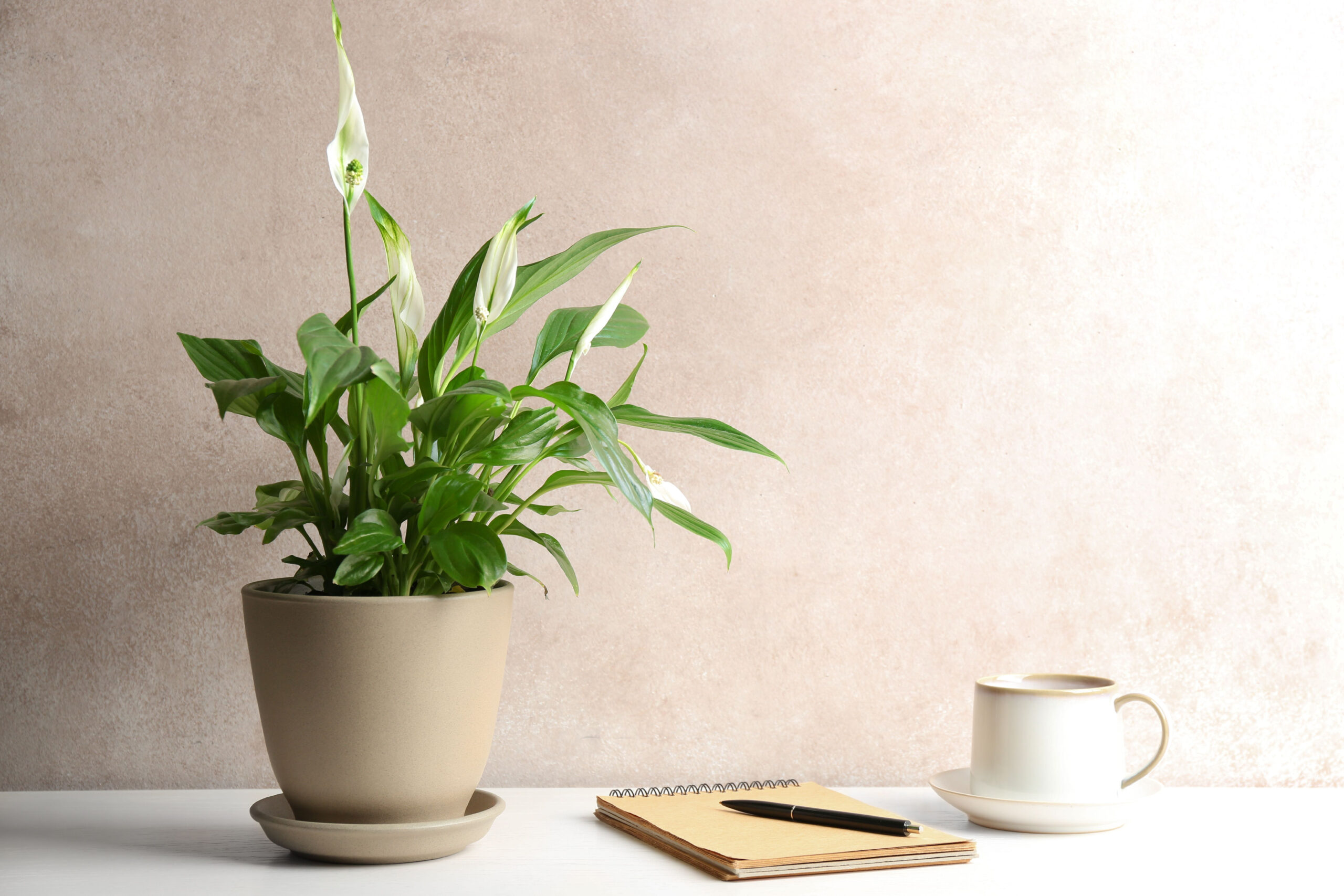
Botanical Name: Spathiphyllum Sun Exposure: Partial Soil Type: Moist but Well-drained, Loamy Soil pH: Acidic (5.8-6.5) The peace lily is a classic choice for indoor gardeners, offering lush foliage and the ability to thrive in lower light. It’s known for its air-purifying qualities and adds a sense of peace and tranquility to any room. Watch for signs of over or under-watering to keep it healthy.
20 Crucial Supplies for Surviving a Societal Collapse
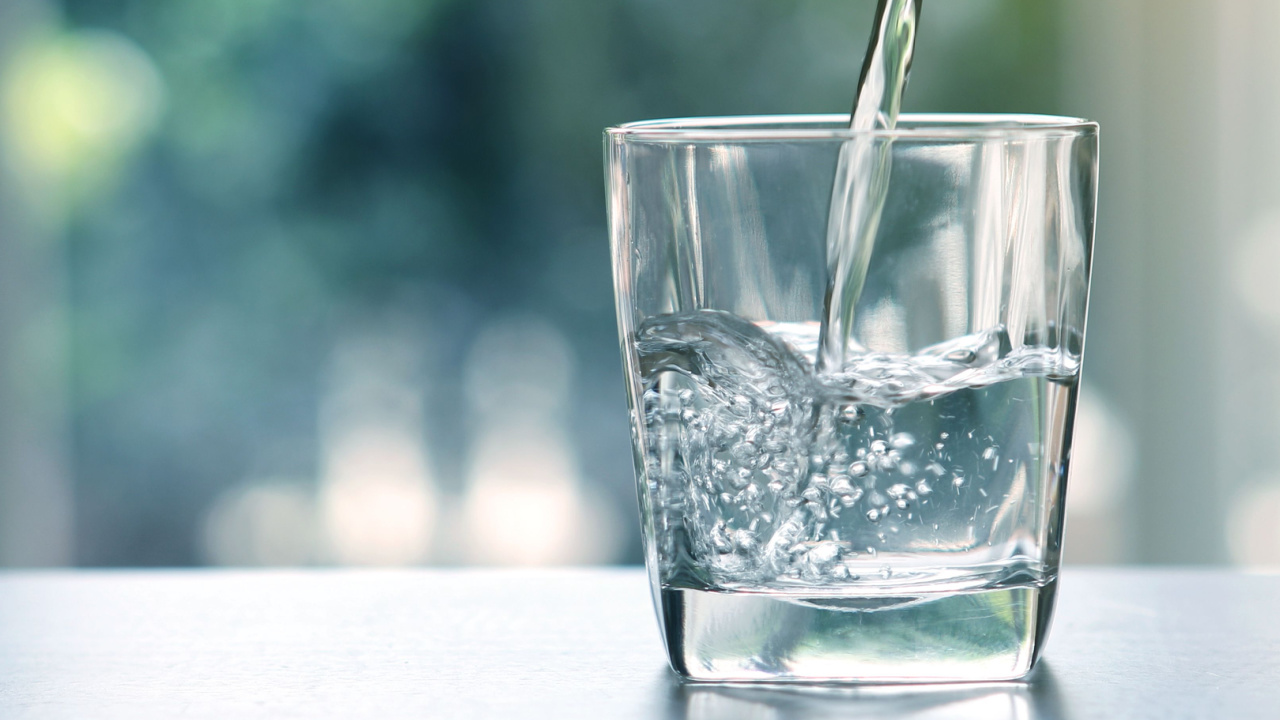
In the face of uncertainty, being well-prepared gives you at least some degree of control and security. The thought of a societal collapse, while extreme, prompts us to consider how we might endure without the conveniences of our current lifestyle. Here’s a list of 20 essential items that could prove indispensable in such a scenario. This guide isn’t about succumbing to fear but embracing preparedness and resilience.
31 Ways to Boost Home Security: How to Fortify Your Fortress and Deter Burglars

We sadly live in a society where it’s all too common for criminals to want to take what we’ve worked hard to get. The results of a break-in are traumatic, too. Beyond just losing your stuff. Victims often feel violated, anxious, and unsafe, sometimes for years after the event.
Prevention is the best way to stay safe. And, while you shouldn’t have to turn your home into a fortress, that’s the stark reality of our world. But you can take plenty of simple steps to deter burglars and ensure your home is less attractive to would-be thieves.
Best Regions in the U.S. to Escape to When Society Collapses

Choosing a refuge in the event of societal collapse involves weighing the pros and cons of each location against your personal preparedness goals and abilities. Whether you’re drawn to the solitude of the desert or the protective heights of the mountains, the key is finding a place that offers safety and the opportunity for growth and renewal.
Katy Willis is a writer, lifelong homesteader, and master herbalist, master gardener, and canine nutritionist. Katy is a preparedness expert and modern homesteader practicing everyday preparedness, sustainability, and a holistic lifestyle.
She knows how important it is to be prepared for whatever life throws at you, because you just never know what's coming. And preparedness helps you give your family the best chance to thrive in any situation.
Katy is passionate about living naturally, growing food, keeping livestock, foraging, and making and using herbal remedies. Katy is an experienced herbalist and a member of the CMA (Complementary Medical Association).
Her preparedness skills go beyond just being "ready", she's ready to survive the initial disaster, and thrive afterward, too. She grows 100% organic food on roughly 15 acres and raises goats, chickens, and ducks. She also lovingly tends her orchard, where she grows many different fruit trees. And, because she likes to know exactly what she's feeding her family, she's a seasoned from-scratch cook and gluten-free baker.
Katy teaches foraging and environmental education classes, too, including self-sufficient living, modern homesteading, seed saving, and organic vegetable gardening.
Katy helps others learn forgotten skills, including basic survival skills and self-reliance.
She's been published on sites such as MSN, Angi, Home Advisor, Family Handyman, Wealth of Geeks, Readers Digest, and more.
